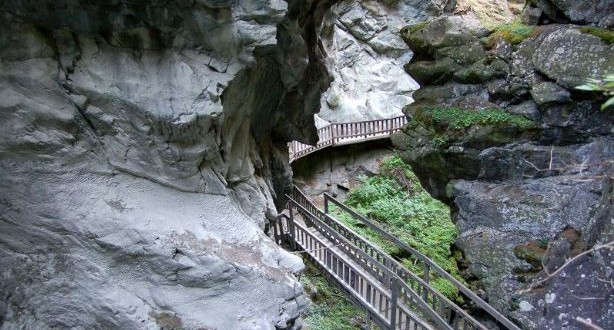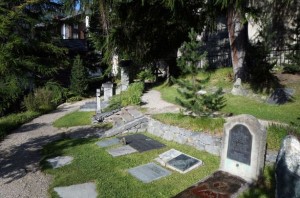Gorner gorge is a place of exceptional natural beauty. The wooden walkways leading between the towering cliffs provide a dramatic insight into the power of nature. The Gorner gorge offers a thrilling adventure for the whole family. Since the last ice age, the waters of the Gornervispe have carved an ever deeper chasm. Access for tourists was created back in 1886 and 1887. The rock which is greenish serpentinite, is about 220 million years old and this natural spectacle is just 15 minute walk from the end of the village of Zermatt.
During summer, visitors can go through the upper stretches of the gorge and through the gorge on foot for some exciting adventures. During mid September between 3 pm and 4 pm, it is especially impressive with the special light conditions that allow the water to take on a brilliant turquoise color. In winter, visitors can enjoy the Gorge adventure. Whether you want to go on a thrilling hike or just to walk through to enjoy the natural nature of the gorge, this place has something for everyone.
The mountaineer’s cemetery is a moving reminder of the accidents that have occurred in the mountains around Zermatt. The tranquil site is a memorial to all climbers who have lost their lives here.
There are many gravestones of the mountaineers but one is an exception. It commemorates two famous climbers who died naturally rather than on the mountain. Peter and Peter Taugwalder, father and son, were the mountain guides of the first person to climb the Matterhorn with Edward Whymper. Only these three out of the original party of seven returned to Zermatt alive. The ascent, on July 14th 1865, was a success but on the way back down four of the limbers fell to their deaths including Michel Auguste Croz, a mountain guide from Chamonix. His gravestone stands beside that of the two Taugwalders.
Two of the English climbers who died on the descent were laid to rest at the English Church in Zermatt, D.Robert Hadow is buried outside, while the Reverend Charles Hudson lies by the church altar. The third English climber who lost his life on the expedition, Lord Francis Douglas, has no grave as his body was never found. Another tombstone in the mountaineer’s cemetery belongs to probably the most famous female mountaineer of the 19th and 20th centuries. Eleonore Noll Hasenclever lost her life as she descended the Bishorn on August 18th 1925 carried away by an avalanche.
Some of the memorial stones bear candles and flowers left by relatives and fellow climbers. In some cases, the stones reveal the causes of accidents such as an avalanche, rockfall or crevasse. One memorial to a young climber carries a simple striking statement “I chose to climb”. The mountaineer’s own red ice axe adorns the stone, along with the US flag. When hearing cemetery, it sounds dark and gloomy but here, it is more tranquil and educational. Visitors who are interested in history and mountaineers who are planning to climb the famous peaks loves to visit here to learn how legends have fulfilled their lives.


